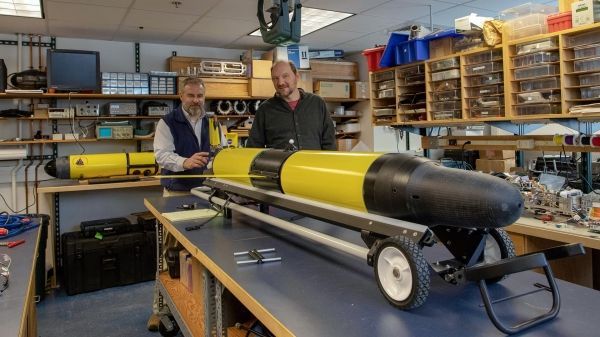As the fastest warming region on Earth, the Arctic is shedding its ice-covered skin at unprecedented rates. It’s lost 95% of its oldest (and most resilient) sea ice in recent decades, and some models suggest that if things continue to heat up, we could see an ice-free Arctic Ocean by mid-century.
To understand just how thin the ice cover has become, WHOI scientists are developing a new autonomous underwater vehicle (AUV) that will measure ice thickness from below the surface for thousands of miles at a time, all with the power draw of a cell phone. It’s one of ten “Big Ideas” set forth by the National Science Foundation (NSF) that will help positioning the U.S. at the cutting edge of global science and engineering leadership.
“Understanding ongoing changes in ice thickness in the Arctic will allow us to identify trends that help long-term forecasting,” said Rich Camilli, a scientist at WHOI who spearheaded the development of the new instrument. “But under sea ice observations have been extremely difficult and expensive to make, and are very sparse as result. This new glider vehicle we’re developing overcomes many of the previous limitations and will make remote measurements of ice thickness—from below the ice—more logistically and economically-feasible than it’s been in the past.”
Read more at Woods Hole Oceanographic Institution
Photo: WHOI scientists Rich Camilli (left) and Ted Maksym are developing a new autonomous underwater vehicle (AUV) that will measure ice thickness from below the Arctic ocean surface for thousands of miles at a time, all with the power draw of a cell phone. (Photo by Jayne Doucette, Woods Hole Oceanographic Institution)


